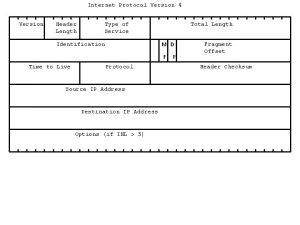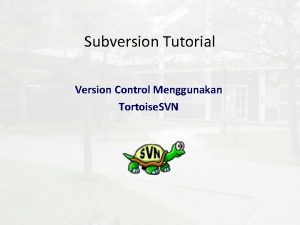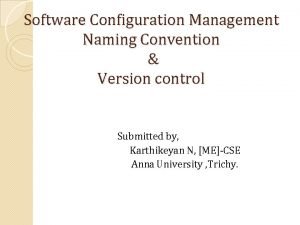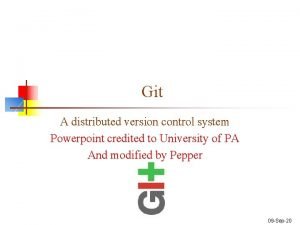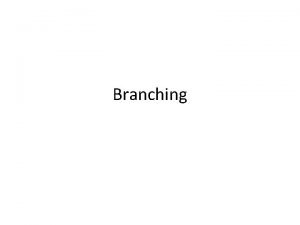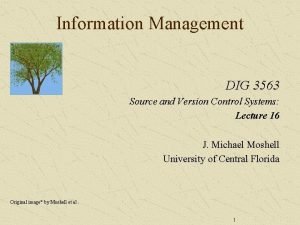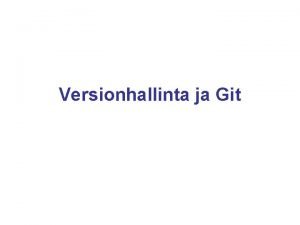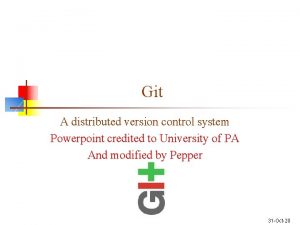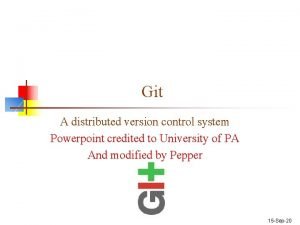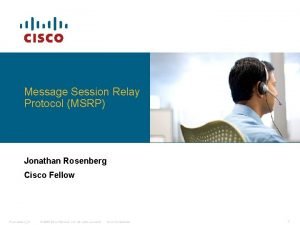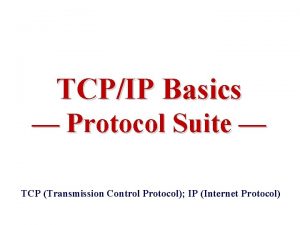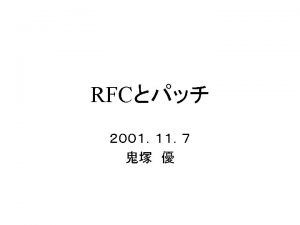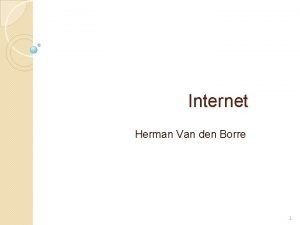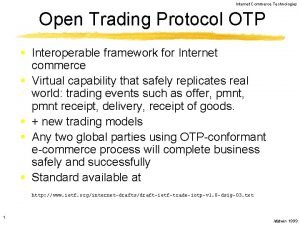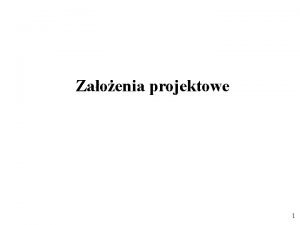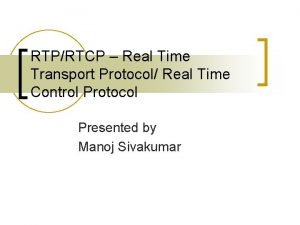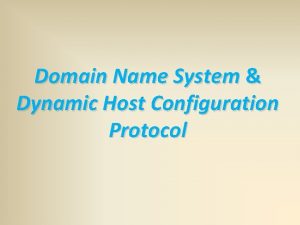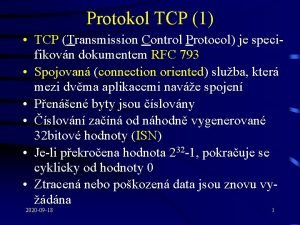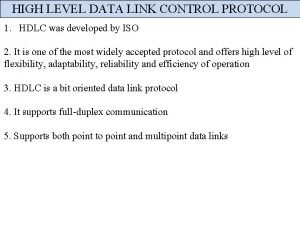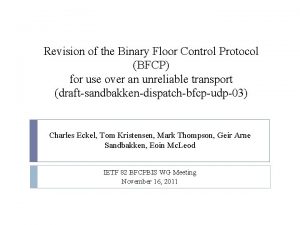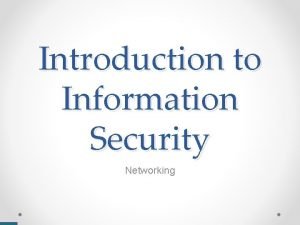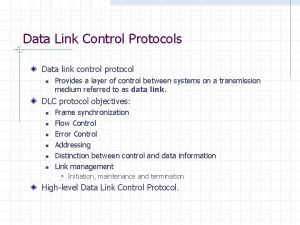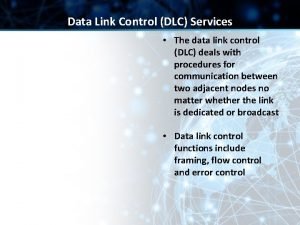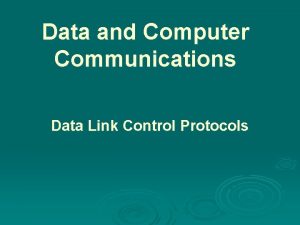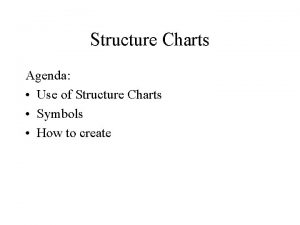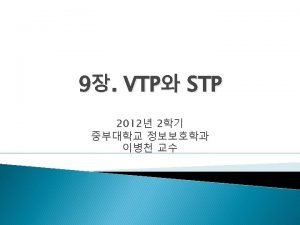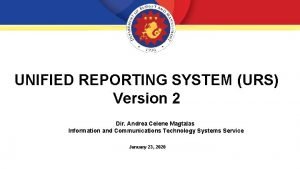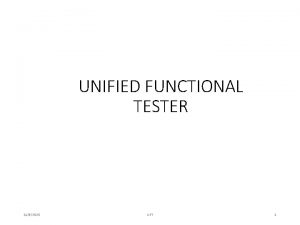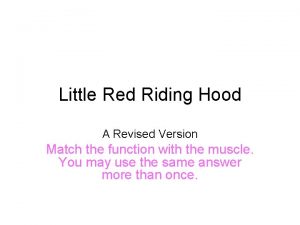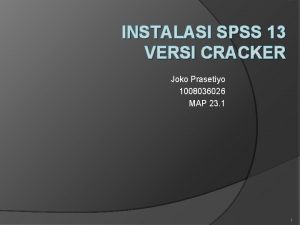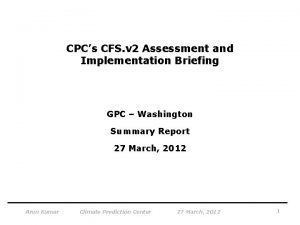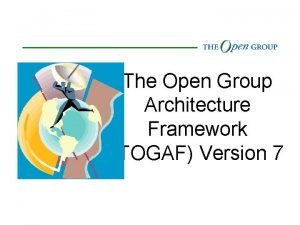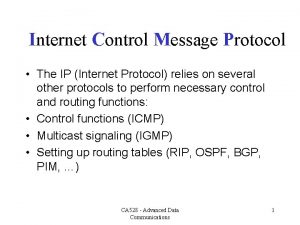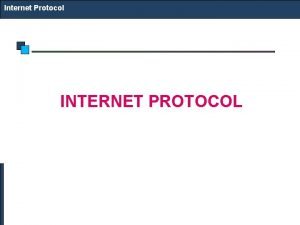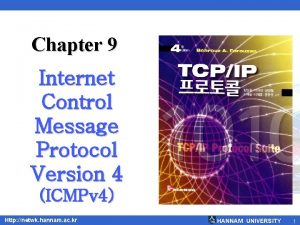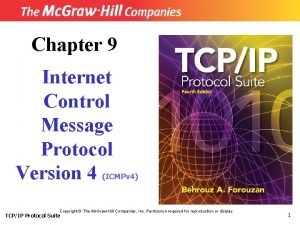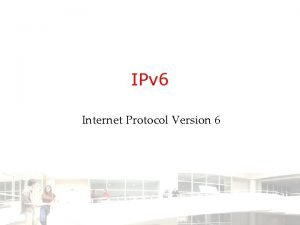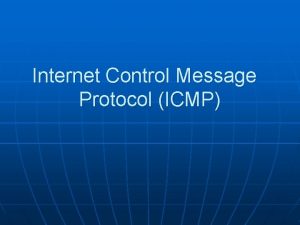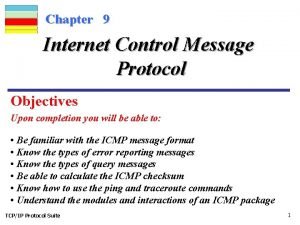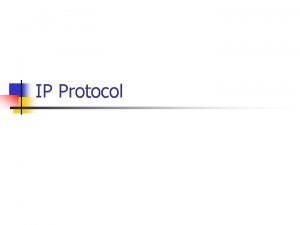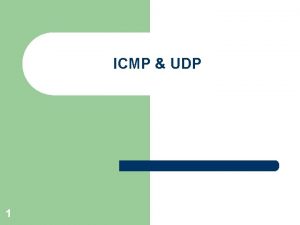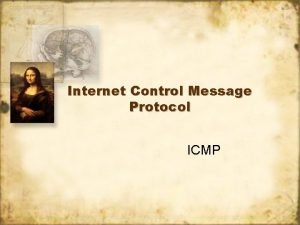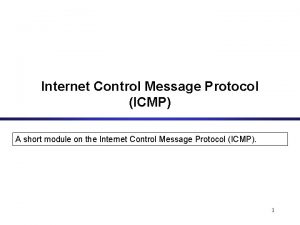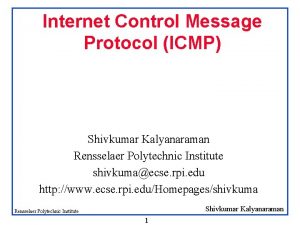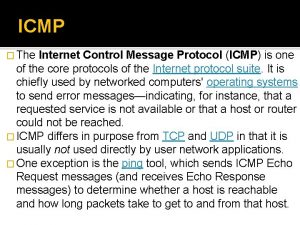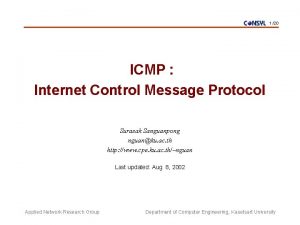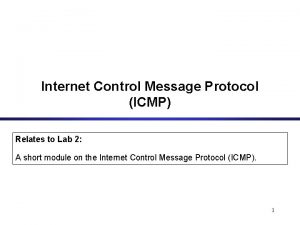Chapter 9 Internet Control Message Protocol Version 4























































- Slides: 55

Chapter 9 Internet Control Message Protocol Version 4 (ICMPv 4) TCP/IP Protocol Suite Copyright © The Mc. Graw-Hill Companies, Inc. Permission required for reproduction or display. 1

OBJECTIVES: q To discuss the rationale for the existence of ICMP. q To show ICMP messages are divided into two categories: error reporting and query messages. q To discuss the purpose and format of error-reporting messages. q To discuss the purpose and format of query messages. q To show the checksum is calculated for an ICMP message. q To show debugging tools using the ICMP protocol. q To show a simple software package that implements ICMP is organized. TCP/IP Protocol Suite 2

Chapter Outline 9. 1 Introduction 9. 2 Messages 9. 3 Debugging Tools 9. 4 ICMP Package TCP/IP Protocol Suite 3

9 -1 INTRODUCTION The IP protocol has no error-reporting or error correcting mechanism. What happens if something goes wrong? What happens if a router must discard a datagram because it cannot find a router to the final destination, or because the time-to-live field has a zero value? These are examples of situations where an error has occurred and the IP protocol has no built-in mechanism to notify the original host. TCP/IP Protocol Suite 4

Topics Discussed in the Section ü The position of ICMP in the TCP/IP suite ü Encapsulation of ICMP Packets TCP/IP Protocol Suite 5

Figure 9. 1 TCP/IP Protocol Suite Position of ICMP in the network layer 6

Figure 9. 2 TCP/IP Protocol Suite ICMP encapsulation 7

9 -2 MESSAGES ICMP messages are divided into two broad categories: error-reporting messages and query messages. The error-reporting messages report problems that a router or a host (destination) may encounter when it processes an IP packet. The query messages, which occur in pairs, help a host or a network manager get specific information from a router or another host. Also, hosts can discover and learn about routers on their network and routers can help a node redirect its messages. TCP/IP Protocol Suite 8

Topics Discussed in the Section ü Message Format ü Error Reporting Messages ü Query Messages ü Checksum TCP/IP Protocol Suite 9

TCP/IP Protocol Suite 10

TCP/IP Protocol Suite 11

Figure 9. 3 TCP/IP Protocol Suite General format of ICMP messages 12

Note ICMP always reports error messages to the original source. TCP/IP Protocol Suite 13

Figure 9. 4 TCP/IP Protocol Suite Error-reporting messages 14

Figure 9. 5 TCP/IP Protocol Suite Contents of data field for the error message 15

Figure 9. 6 TCP/IP Protocol Suite Destination-unreachable format 16

Note Destination-unreachable messages with codes 2 or 3 can be created only by the destination host. Other destination-unreachable messages can be created only by routers. TCP/IP Protocol Suite 17

Note A router cannot detect all problems that prevent the delivery of a packet. TCP/IP Protocol Suite 18

Note There is no flow-control or congestioncontrol mechanism in the IP protocol. TCP/IP Protocol Suite 19

Figure 9. 7 TCP/IP Protocol Suite Source-quench format 20

Note A source-quench message informs the source that a datagram has been discarded due to congestion in a router or the destination host. The source must slow down the sending of datagrams until the congestion is relieved. TCP/IP Protocol Suite 21

Note One source-quench message is sent for each datagram that is discarded due to congestion. TCP/IP Protocol Suite 22

Note Whenever a router decrements a datagram with a time-to-live value to zero, it discards the datagram and sends a time-exceeded message to the original source. TCP/IP Protocol Suite 23

Note When the final destination does not receive all of the fragments in a set time, it discards the received fragments and sends a time-exceeded message to the original source. TCP/IP Protocol Suite 24

Figure 9. 8 TCP/IP Protocol Suite Time-exceeded message format 25

Note In a time-exceeded message, code 0 is used only by routers to show that the value of the time-to-live field is zero. Code 1 is used only by the destination host to show that not all of the fragments have arrived within a set time. TCP/IP Protocol Suite 26

Note A parameter-problem message can be created by a router or the destination host. TCP/IP Protocol Suite 27

Figure 9. 9 TCP/IP Protocol Suite Parameter-problem message format 28

Figure 9. 10 TCP/IP Protocol Suite Redirection concept 29

Note A host usually starts with a small routing table that is gradually augmented and updated. One of the tools to accomplish this is the redirection message. TCP/IP Protocol Suite 30

Figure 9. 11 TCP/IP Protocol Suite Redirection message format 31

Note A redirection message is sent from a router to a host on the same local network. TCP/IP Protocol Suite 32

Note An echo-request message can be sent by a host or router. An echo-reply message is sent by the host or router that receives an echo-request message. TCP/IP Protocol Suite 33

Note Echo-request and echo-reply messages can be used by network managers to check the operation of the IP protocol. TCP/IP Protocol Suite 34

Note Echo-request and echo-reply messages can test the reachability of a host. This is usually done by invoking the ping command. TCP/IP Protocol Suite 35

Figure 9. 12 TCP/IP Protocol Suite Echo-request and echo-reply message 36

Figure 9. 13 TCP/IP Protocol Suite Timestamp-request and timestamp-reply message format 37

Note Timestamp-request and timestamp-reply messages can be used to calculate the round-trip time between a source and a destination machine even if their clocks are not synchronized. TCP/IP Protocol Suite 38

Note The timestamp-request and timestampreply messages can be used to synchronize two clocks in two machines if the exact one-way time duration is known. TCP/IP Protocol Suite 39

Example 9. 1 Figure 9. 14 shows an example of checksum calculation for a simple echo-request message (see Figure 9. 12). We randomly chose the identifier to be 1 and the sequence number to be 9. The message is divided into 16 -bit (2 byte) words. The words are added together and the sum is complemented. Now the sender can put this value in the checksum field. TCP/IP Protocol Suite 40

Figure 9. 14 TCP/IP Protocol Suite Example of checksum calculation 41

9 -3 DEBUGGING TOOLS There are several tools that can be used in the Internet for debugging. We can find if a host or router is alive and running. We can trace the route of a packet. We introduce two tools that use ICMP for debugging: ping and traceroute. We will introduce more tools in future chapters after we have discussed the corresponding protocols. TCP/IP Protocol Suite 42

Topics Discussed in the Section ü Ping ü Traceroute TCP/IP Protocol Suite 43

Example 9. 2 We use the ping program to test the server fhda. edu. The result is shown below: TCP/IP Protocol Suite 44

Example 9. 3 For the second example, we want to know if the adelphia. net mail server is alive and running. The result is shown below: Note that in this case, we sent 14 packets, but only 13 have been returned. We may have interrupted the program before the last packet, with sequence number 13, was returned. TCP/IP Protocol Suite 45

Figure 9. 15 TCP/IP Protocol Suite The traceroute program operation 46

Example 9. 4 We use the traceroute program to find the route from the computer voyager. deanza. edu to the server fhda. edu. The following shows the result. TCP/IP Protocol Suite 47

Example 9. 5 In this example, we trace a longer route, the route to xerox. com. The following is a partial listing. TCP/IP Protocol Suite 48

Example 9. 6 An interesting point is that a host can send a traceroute packet to itself. This can be done by specifying the host as the destination. The packet goes to the loopback address as we expect. TCP/IP Protocol Suite 49

Example 9. 7 Finally, we use the traceroute program to find the route between fhda. edu and mhhe. com (Mc. Graw-Hill server). We notice that we cannot find the whole route. When traceroute does not receive a response within 5 seconds, it prints an asterisk to signify a problem (not the case in this example), and then tries the next hop. TCP/IP Protocol Suite 50

9 -4 ICMP PACKAGE To give an idea of how ICMP can handle the sending and receiving of ICMP messages, we present our version of an ICMP package made of two modules: an input module and an output module. TCP/IP Protocol Suite 51

Topics Discussed in the Section ü Input Module ü Output Module TCP/IP Protocol Suite 52

Figure 9. 16 TCP/IP Protocol Suite ICMP package 53

TCP/IP Protocol Suite 54

TCP/IP Protocol Suite 55
 No protocol version header
No protocol version header Version control systems industry
Version control systems industry Svn subversion tutorial
Svn subversion tutorial Version control in software configuration management
Version control in software configuration management Introduction to git ppt
Introduction to git ppt Version control branching
Version control branching Alienbrain version control
Alienbrain version control Versionhallinta
Versionhallinta Version control powerpoint
Version control powerpoint Powerpoint version control
Powerpoint version control Message session relay protocol
Message session relay protocol Security architecture for the internet protocol
Security architecture for the internet protocol Internet transport protocol in computer networks
Internet transport protocol in computer networks Protocol
Protocol Internet official protocol standards
Internet official protocol standards Internet protocol cursus
Internet protocol cursus Internet open trading protocol
Internet open trading protocol Schemat logiczny sieci komputerowej
Schemat logiczny sieci komputerowej Iptv internet protocol television
Iptv internet protocol television Adaptive internet protocol
Adaptive internet protocol What is internet
What is internet Skinny protocol
Skinny protocol Real time control protocol
Real time control protocol Domain host control protocol
Domain host control protocol 4-way handshake
4-way handshake High-level data link control
High-level data link control Tcp (transmission control protocol) to protokół
Tcp (transmission control protocol) to protokół Bfcp
Bfcp Transmission control protocol
Transmission control protocol Real time control protocol
Real time control protocol The ppp link control protocol was terminated
The ppp link control protocol was terminated Hdlc adalah
Hdlc adalah Data link control
Data link control Which protocol has neither flow nor error control
Which protocol has neither flow nor error control Data link control protocols
Data link control protocols In a structure chart a control couple shows a message
In a structure chart a control couple shows a message Numeracy continuum qld
Numeracy continuum qld Vlan spanning
Vlan spanning Unified reporting system
Unified reporting system Uft version history
Uft version history Classifying triangles maze
Classifying triangles maze Hebrews 4:12 amplified
Hebrews 4:12 amplified Apostle creed prayer
Apostle creed prayer Risk student version
Risk student version Www.sedboyaca.gov.co sac
Www.sedboyaca.gov.co sac 2 houses both alike in dignity
2 houses both alike in dignity Nhdplus version 2
Nhdplus version 2 Little red riding hood a revised version answers
Little red riding hood a revised version answers Quien es el autor secundario de la biblia
Quien es el autor secundario de la biblia Nhdplus version 2
Nhdplus version 2 Download spss 13 full crack
Download spss 13 full crack Eviews
Eviews Cfs version 2
Cfs version 2 Ine trial
Ine trial Internal version
Internal version The open group architecture framework togaf version 9
The open group architecture framework togaf version 9
